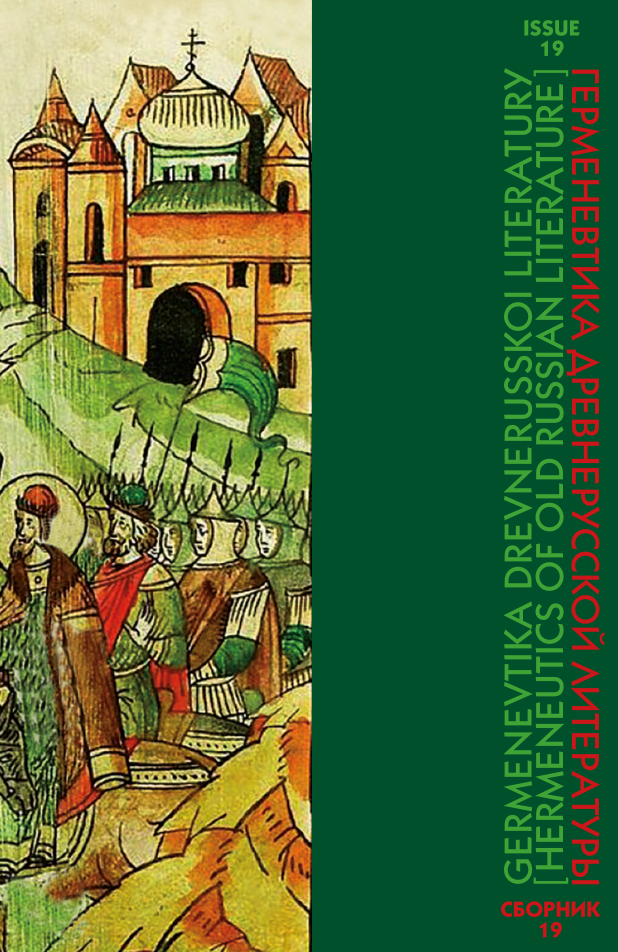Abstract:
The Youth Dialogue about Feast of the Nativity from a cycle “Rhymed and not Rhymed Poems” from the manuscript collection by T.F. Bolshakov (RSL. F. 37. No. 88) refers to the poems in the collection on the biblical plots. The Dialogue, presumably dated to the 17th century, is a small rhymed poem with elements of action, divided into lines of poetry and played by roles by two youths ‘little yours’ to the listening ‘faithful virgins’. The Dialogue was clearly intended for a listener or spectator and, possibly, was shown on a stage or in a church as an action in which passages from the Gospel were read, represented in persons. The stage character of The Dialogue is indicated by an appeal to the audience, containing an invitation to listen to the story, and in a spectacular manner of a riddle, clearly with the aim of interest (intrigue) the audience. There are elements of artistic expressiveness in The Dialogue which gives dynamics and poetry to the text and, possibly, in order to impress the audience. Rapid change of verbs while reading could give an internal dynamics to the passage and even more captivate the audience. The Dialogue contains traditional Christmas attributes (star, myrrh, censer, angels), quotes from the Psalter, but the text doesn’t convey exactly the Gospel, but represents a poetic interpretation of Christmas. The Dialogue contains a linguistic expressiveness which is given by emotional elements (description of Herod’s intentions and speech expressiveness of the Mother of God), artistically meaningful persistent evangelical images (‘a pure dove,’ ‘stars from heaven’). The speech of the two youths is also expressive, in which some differences are also guessed (the speech of the first is more descriptive, the speech of the second is more graphic). All this makes it possible to talk about the elements of artistic expression inherent in The Youth Dialogue about Feast of the Nativity.
References:
- Georgievskii, G.P. Rukopisi T.F. Bol’shakova, khraniashchiiasia v Moskovskom i Rumiantsovskom muzee [The Manuscripts of T.F. Bolshakov from the Moscow and Rumyantsov Museum]. Petrograd, Izdanie Otdeleniia russkago iazyka i slovesnosti Imperatorskoi akademii nauk Publ., 1915. VIII, 455 p. (In Russian)
- Demin, A.S. Istoricheskaia semantika sredstv i form drevnerusskoi literatury (istochnikovedcheskie ocherki) [Historical Semantics of the Means and Forms of Old Russian Literature (Source Studies)]. Moscow, Iazyki slavianskoi kul’tury Publ., 2019. 496 p. (In Russian)
- “Physiologist,” text, trans., comment. O.A. Belobrova. Biblioteka literatury Drevnei Rusi [The Library of Old Russian Literature], vol. 5. Available at: http://lib. pushkinskijdom.ru/Default.aspx?tabid=4967 (accessed 20 October 2020). (In Russ.)






